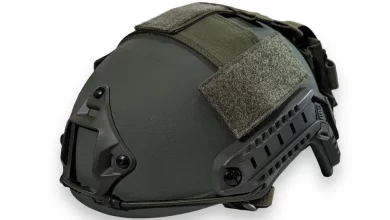Oxygen Concentrators: A Lifeline for Chronic Respiratory Conditions
Oxygen Concentrators: A Lifeline for Chronic Respiratory Conditions

Oxygen concentrators have become an indispensable tool for individuals suffering from chronic respiratory conditions. These devices provide a continuous supply of oxygen, helping patients manage their symptoms and improve their quality of life. In this article, we will explore the significance of oxygen concentrators, how they work, their benefits, and other essential aspects related to these life-saving devices.
Introduction to Oxygen Concentrators
Chronic respiratory conditions such as chronic obstructive pulmonary disease (COPD), asthma, and cystic fibrosis can significantly impact a person’s ability to breathe effectively. Oxygen concentrators are medical devices designed to address this challenge by extracting oxygen from the surrounding air and delivering it to the patient at higher concentrations.
Understanding Chronic Respiratory Conditions
Chronic respiratory conditions are characterized by persistent breathing difficulties, shortness of breath, coughing, and wheezing. These conditions often require long-term management and can affect individuals of all ages. Oxygen therapy is a common treatment approach used to alleviate symptoms and improve patients’ oxygen levels.
Importance of Oxygen Therapy
Oxygen therapy plays a crucial role in managing chronic respiratory conditions. By increasing the oxygen levels in the blood, it helps reduce breathlessness, enhance exercise tolerance, and promote overall well-being. Oxygen concentrators serve as a reliable source of supplemental oxygen, especially for patients who require continuous oxygen therapy.
How Oxygen Concentrators Work
Oxygen concentrators utilize a process called pressure swing adsorption (PSA) to extract oxygen from the air. They filter out nitrogen and other gases, leaving behind purified oxygen that is delivered to the patient through a nasal cannula or mask. These devices are efficient, portable, and easy to use, making them suitable for home use and travel.
Types of Oxygen Concentrators
There are two main types of oxygen concentrators: stationary and portable. Stationary concentrators are larger and designed for use at home, providing a continuous flow of oxygen. Portable concentrators, on the other hand, are lightweight and battery-operated, allowing patients to move around freely while receiving oxygen therapy.
Benefits of Using Oxygen Concentrators
- Improved breathing and oxygenation
- Enhanced quality of life and mobility
- Reduced risk of respiratory complications
- Greater independence and flexibility
- Cost-effective compared to other oxygen delivery methods
Factors to Consider Before Buying an Oxygen Concentrator
Before purchasing an oxygen concentrator, it’s essential to consider factors such as oxygen flow settings, battery life (for portable models), size and weight, noise level, maintenance requirements, and warranty coverage. Consulting with a healthcare professional can help determine the most suitable device based on individual needs.
Maintenance and Care Tips for Oxygen Concentrators
Proper maintenance is crucial to ensure the optimal performance and longevity of oxygen concentrators. This includes regular cleaning of filters, tubing, and accessories, checking oxygen purity levels, keeping the device in a well-ventilated area, and following manufacturer guidelines for servicing and repairs.
Oxygen Concentrators vs. Oxygen Tanks
While oxygen tanks are another option for oxygen therapy, oxygen concentrators offer several advantages, including continuous oxygen supply, no need for refills or replacements (as with tanks), and greater portability for active lifestyles. However, the choice between the two depends on factors such as oxygen requirements, lifestyle preferences, and budget.
Cost and Accessibility of Oxygen Concentrators
The cost of oxygen concentrators can vary depending on the brand, features, and type of device. In some cases, health insurance plans may cover part or all of the cost. Additionally, advancements in technology have made oxygen concentrators more accessible and affordable for patients who need them.
Real-life Stories: Impact of Oxygen Concentrators on Patients
Many individuals with chronic respiratory conditions have shared their experiences of how oxygen concentrators have transformed their lives. From regaining independence to participating in activities they enjoy, these stories highlight the significant impact of oxygen therapy on physical and emotional well-being.
Future Developments in Oxygen Concentrator Technology
As technology continues to evolve, we can expect further advancements in oxygen concentrator design, efficiency, and connectivity. Features such as smart monitoring, remote data tracking, and improved battery life will contribute to making oxygen therapy more convenient and effective for patients.
Conclusion
Oxygen concentrators play a vital role in providing essential oxygen therapy to individuals with chronic respiratory conditions. Their ability to deliver a steady supply of oxygen has a profound impact on patients’ quality of life, mobility, and overall health. With ongoing advancements in technology and increased accessibility, oxygen concentrators remain a lifeline for those in need.




